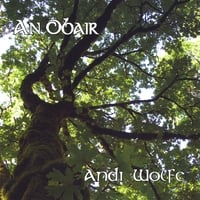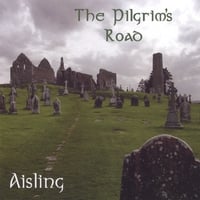 Ten days up, but we had only four days to get back to Lukla. We would have had five days if our schedule hadn't been discombobulated from being snowed in an extra day in Dingboche on the way up. You'd think going downhill would be much easier, and it was from the point-of-view of being able to go faster, but downhill is very tough on the joints - especially knees.
Ten days up, but we had only four days to get back to Lukla. We would have had five days if our schedule hadn't been discombobulated from being snowed in an extra day in Dingboche on the way up. You'd think going downhill would be much easier, and it was from the point-of-view of being able to go faster, but downhill is very tough on the joints - especially knees.Our morning companion was the Khumbu glacier as we hiked along the lateral moraine. I really enjoyed the scenery up here near the glacier. The mountains were so majestic and the views were stunning everywhere you looked. I just can't get over the impact this area has had on me. Watching the mountains erode in real time - all those boulders flowing down the valley on the glacier. The Himalayas are still rising, but they're being torn down at the same time.

It looks like these yaks are carrying loads of potatoes - probably on their way to Everest base camp.

We took a rest break at the same spot we rested on the way up the glacier. Steve draped some prayer flags around this memorial cairn. He wanted to honor the memory of Tendi's brother, who died on Everest just a week or so earlier.

Another look at Nuptse before we lose the view to clouds.

Some of our Sherpa staff, taking their rest break while Steve is having his picture taken at the memorial cairn.

I'll always remember the sound of yak bells from this region. They are essential to the economy of this area - everything moves up the mountain either on the backs of yaks or human porters.

We arrived at Lobuche at mid-morning. I hadn't really paid much attention to Lobuche on the way up to Gorak Shep since that was one of my low days in terms of how I was feeling. It was interesting to see it from this angle - it's a very small village that seems to be there just for the traffic from climbers and trekkers.

We took a rest break here. There were some temporary shelters scattered amongst the rocks. The fellow on the right is using an overturned satellite dish as a clothes drying rack.

A lammergeier, or, bearded vulture. These majestic giants are old world vultures, but they have feathered heads rather than bare ones. There's a small tuft of feathers at the base of the beak, which is why they are called bearded vultures. The last time I saw one of these in flight was in 2003, in South Africa's Drakensberg range.

I think this might be a female rose finch, but I have to take a look at my birds of Nepal book to get the identification sorted out.

There goes the lammergeier again.

One of the Lobuche peaks - maybe Lobuche east?

Another view of the temporary camp in Lobuche.

A yellow-billed Chough.

Robin accentor

Another view of the robin accentor

We again passed through the memorial cairns at the terminal end of the Khumbu glacier.

What is so sobering to me is that there are so many cairns here.

This is the one dedicated to Scott Fischer, an American climber who lost his life in the 1996 disaster that is described in Jon Krakauer's book, "Into thin air."



It really felt good to have a rest break here before we tackled the knee buster terminal moraine down to Dhukla.

Newly draped prayer flags are very colorful and not too frayed. The ones that have been there for a while are faded and ragged.

This is the terminal moraine for the Khumbu glacier. I think it's about 200 meters in height, but maybe it just feels that high as you're climbing it - going either direction. It's definitely a knee buster coming down.

We had our lunch outdoors at Dhukla. While we were sitting outside the tea house, a group of trekkers passed us by on their way up the terminal moraine. What was so unusual about this group is that they had two wheel-chair bound members who were being carried on the backs of porters.
After lunch it began to snow and mist and so I put away my camera for the afternoon and concentrated on trekking. Here's my post from that day of trekking, sent from Dingboche.











2 comments:
andi -- now that you've had time to reflect, how has this trip effected your connection to today’s day-to-day reality?
-how has this trip changed you?
This trek helped me to put my day-to-day stress into perspective. For three weeks I lived in a stress-free zone. My focus was on the moment and I completely put aside the anxiety that riddles my existence. It was a good feeling, I must admit. Thus, I've realized that I don't need to let stress rule me. I can still live in the moment and cherish the joys in life instead of being ruled by the stresses of modern society. That is not to say that deadlines aren't a driving force in my life, but I now know what it is to be without anxiety and I like it a lot.
My perspective has also changed on what it takes to be happy. Compared to the western mode of living, the Nepali people (especially the Sherpa) are impoverished in terms of material wealth, conveniences and modern commodities, but they are amongst the happiest people I've ever known. I think we could learn from their example and adopt a less is more philosophy.
Wouldn't it be interesting to see American society in 10 years time if everyone gave up their big gas-guzzling cars and used their feet for transportation? Ditto for giving up the fast food and junk food diet we have adopted as a society. The obesity epidemic might wane, for one thing, and we'd have a much healthier population. I already had a commitment to fitness, but this trek made me realize that if I want to do more of the same, I better keep myself in good physical condition.
Post a Comment